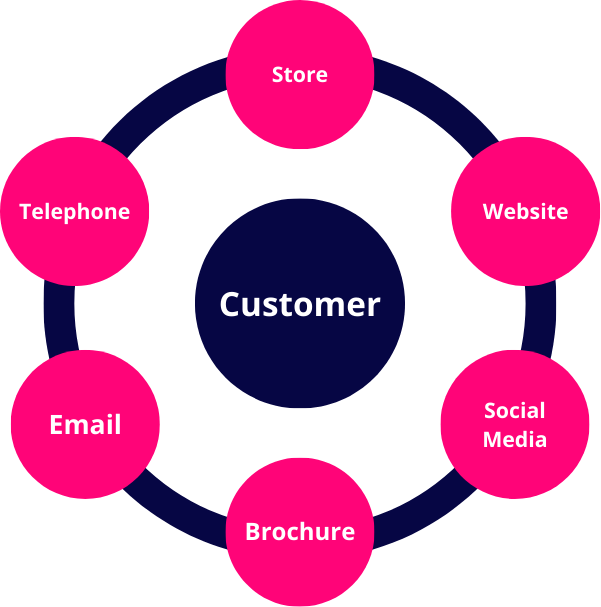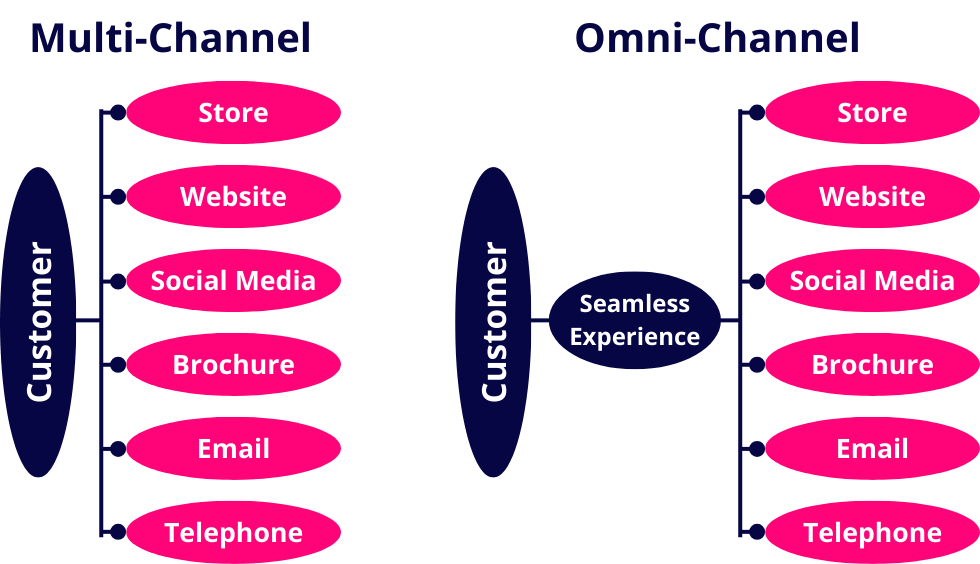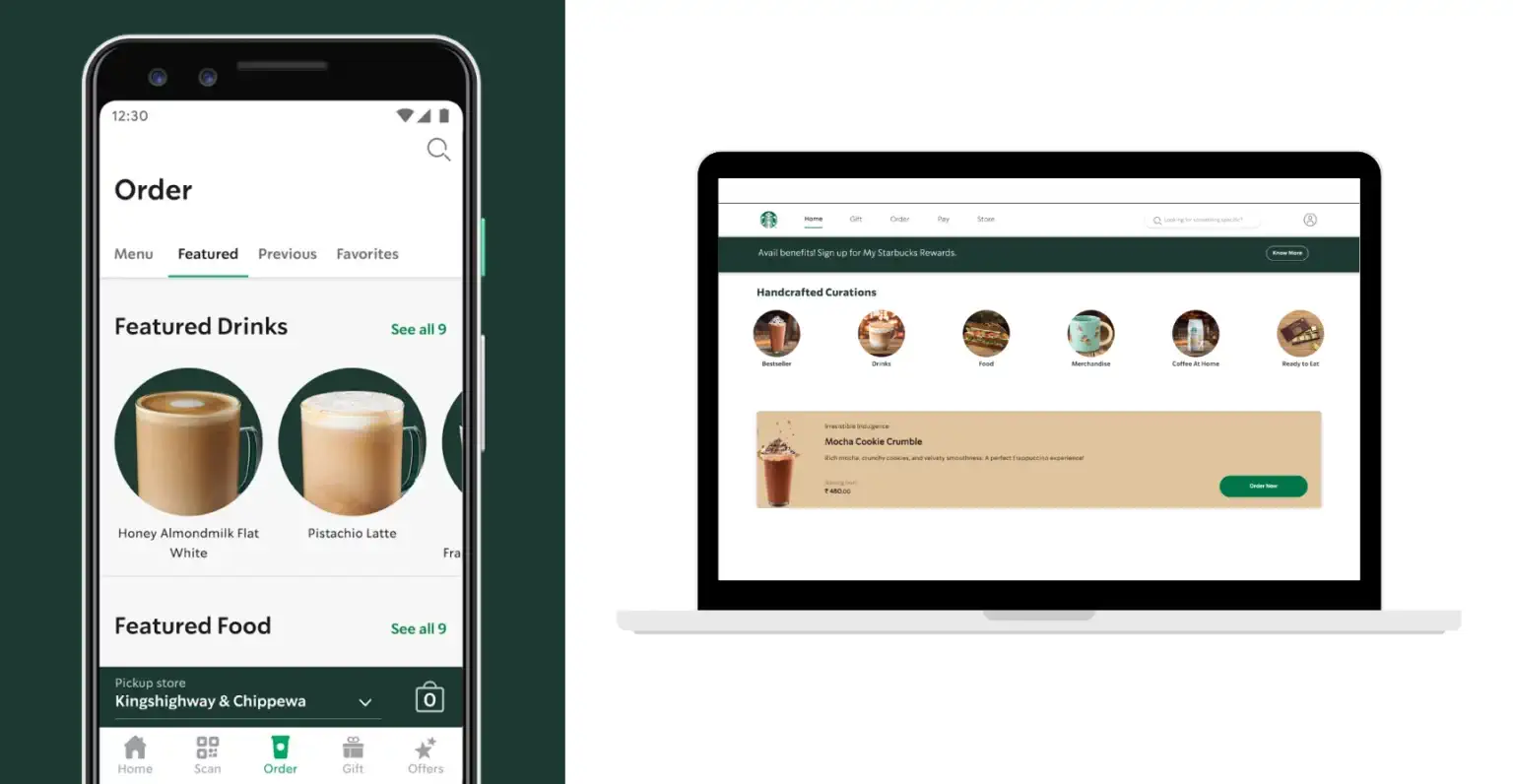Dec 02, 2024
insights
Omnichannel Retail: Creating Seamless Customer Experiences
Over 50% of customers use up to five channels to interact with a business. Three is the bare minimum in these statistics. What does it mean?
We know that coming to the traditional brick-and-mortar stores may seem outdated. If you belong to the millennials, you would probably rather go to platforms like Amazon.
However, many people still prefer to choose from what they see with their own eyes. This tendency is still continuing to grow but at a slower rate than e-commerce sales.
Does it mean you should refuse to create an online shop? No, neither extreme is good.
And here is the right time to introduce you to omnichannel retail, which takes the best from both worlds. Read our blog post and find out all the nuances of this concept and what it can bring to your business!
Understanding the Omnichannel Customer Journey
First, let’s clear things out (in case you don’t know what an omnichannel customer journey is). If we break this word into two, we’ll get “omni” and “channel.” Omni is a Latin prefix that means “all.” The word “channel” is understandable for all, we think.

So, omnichannel strategy is creating a seamless customer experience across all the channels (both online and offline). This is the perfect method to offer your services via the channels your customers prefer. In this way, you acknowledge the changing behaviors of your audience and allow it to interact with your business through various touchpoints.

Omnichannel marketing can be compared to multichannel one. The main difference between them lies in the fact that omnichannel marketing ensures you do not use your channels in isolation. They should be interconnected. Remember, your business should revolve around the customer. Not vice versa!

Let’s think about Starbucks. It is a perfect example of utilizing an omnichannel retail strategy. If you are familiar with this brand, you know you can buy their coffee through a mobile app, website, and physical stores. Their logo, color scheme, and assortiment are present across all channels.

Now, let’s look in more detail into the main elements that should be present in creating an omnichannel customer journey.
Key Components of a Successful Omnichannel Strategy
Explore the components that make an omnichannel strategy so effective.
- Unified customer data
It is important that all your data from various touchpoints is consolidated. This means purchases, online behavior, and customer service interaction are collected in one centralized system (like a CRM or data warehouse).
- Consistent branding across channels
No matter where your customers are purchasing, they should see the same messaging, tone of voice, branding, and design. To do this, create brand guidelines that specify how your brand is represented across different channels and ensure all teams follow them.
- Channel-specific organization
The nature of omnichannel strategy implies you seamlessly integrate your technology stuck in systems like ERP, CRM, POS. All of them should work together to provide real-time data synchronization.
Each touchpoint should be reliable and aligned. However, not all think that so should be the transitions between them. Thus, it’s essential to ensure that transitions between channels are just as seamless as the individual touchpoints themselves.
Benefits of Omnichannel Retail
Adopting an omnichannel retail strategy offers a wide range of advantages for businesses, directly impacting customer experience, revenue, and operational efficiency. Here’s a detailed look at the key benefits:
01. Increased Customer Satisfaction and Loyalty
An omnichannel approach ensures customers can interact with your business through their preferred channels, creating a seamless and convenient experience. Whether they shop online, visit a store, or use a mobile app, consistency and personalization enhance satisfaction.
Why it matters: Satisfied customers are more likely to return, recommend your brand to others, and develop a stronger emotional connection with your business.
- Example: Starbucks’ omnichannel loyalty program makes it easy for customers to earn and redeem points regardless of whether they order in-store, online, or through the app.
02. Improved Customer Retention
When customers experience convenience and flexibility across all channels, they’re less likely to seek alternatives. Omnichannel strategies allow businesses to proactively engage with their audience, keeping them invested in the brand.
- Why it matters: Retaining an existing customer is more cost-effective than acquiring a new one.
- How it works: Features like personalized follow-ups, re-engagement emails, and consistent after-sales service help nurture long-term relationships.
Example: H&M uses omnichannel touchpoints like personalized app notifications and in-store promotions to keep shoppers returning.
03. Higher Conversion Rates
Omnichannel strategies create a smoother customer journey, reducing friction that might otherwise lead to abandoned carts or lost sales. When customers can transition easily between channels—such as starting a purchase on their phone and completing it in-store—it eliminates barriers to purchase.
- Why it matters: A simplified purchasing process leads to higher sales and fewer lost opportunities.
- Example: Walmart’s “click-and-collect” option drives sales by enabling customers to purchase online and pick up in-store without delays.
Potential challenges & How to avoid them
Although the future of multichannel retail seems bright, it still does have a few potential challenges.
- Integrating multiple channels—such as online platforms, mobile apps, and physical stores—requires significant technological investment and expertise
- Maintaining consistent branding and messaging across channels can be complex, particularly for global businesses catering to a diverse market
- Collecting and analyzing customer data to personalize experiences while adhering to privacy regulations is a delicate balancing act
To tackle these challenges, you need the help of a trusted partner (IT specialists who can ensure seamless integration across channels, creating unified experiences for your customers).
This is what Innovation Feel can perfectly do. With our support, your business can stay agile, adapt to changing consumer behaviors, and deliver innovative, customer-centric solutions that set you apart from the competition. Our expertise lies in custom software development to connect your online platforms, mobile apps, and physical stores into a cohesive ecosystem.
Summing up…
The secret to successful omnichannel retail is that the customer should not be aware of it. If done properly, it creates a sense of a unified system. It not only gives what users need but also participates in what they may want in the future.
Need help integrating these components into your business?
Work with Innovation Feel, and we’ll help you create a seamless, interconnected omnichannel ecosystem tailored to your unique needs!